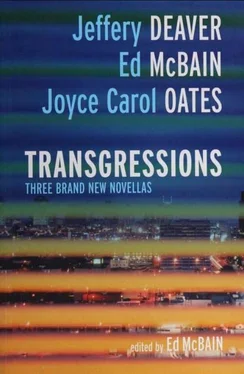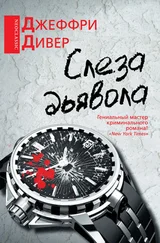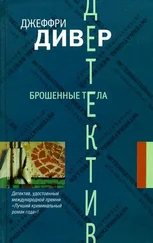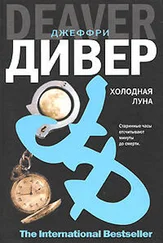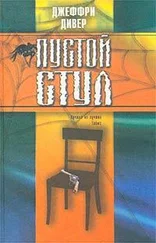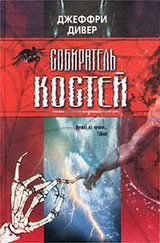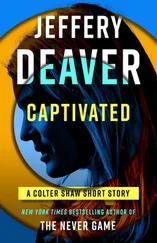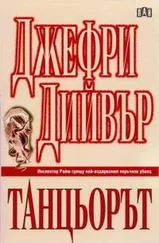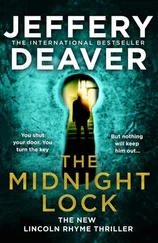“You can give it to me now and I’ll forget about the incident. Or we can take that trip downtown.”
She held his eye for a moment, slicing him into tiny pieces, as she debated. Then she opened her purse. She handed him a small stack of mail. “It was in the mailbox to be picked up. But with that yellow tape all over the place the mailman couldn’t come by. I was just going to mail it.”
“I’ll take it.”
She held the envelopes out to him with a hand that seemed to be quivering slightly. He took them in his gloved hands.
In fact, he’d had no idea that she’d put anything in her purse; he’d had a flash of intuition. Talbot Simms suddenly felt a rush of excitement; statisticians never bluff.
Sandra looked around the room and her eyes seemed mournful again. But he decided it was in fact anger. She said icily, “You will he hearing from my litigation partner, Detective Simms. Shut the lights out when you leave, unless the county’s going to be paying the electric bill.”
“I’m getting coffee, Boss. You want some?”
“Sure, thanks,” he told Shellee.
It was the next morning and Tal was continuing to pore over the material he’d collected. Some new information had just arrived: the Whitleys’ phone records for the past month, the autopsy results, and the handwriting analysis of the suicide note.
He found nothing immediately helpful about the phone records and set them aside, grimacing as he looked for someplace to rest them. There wasn’t any free space on his desk and so he stacked them, as orderly as he could, on top of another stack. It made him feel edgy, the mess, but there wasn’t anything else he could do, short of moving a table or another desk into his office — and he could imagine the ribbing he’d take for that.
Data plural... humping his calculator...
Tal looked over the handwriting expert’s report first. The woman said that she could state with 98 percent certainty that Sam Whitley had written the note, though the handwriting had been unsteady and the spelling flawed, which was unusual for a man of his education.
The garage is filled with dangrous fumes.
This suggested some impairment, possible severe, she concluded.
Tal turned to the autopsy results. Death was, as they’d thought, due to carbon monoxide poisoning. There were no contusions, tissue damage, or ligature marks to suggest they’d been forced into the car. There was alcohol in the blood, 010 percent in Sam’s system, 0.019 in Elizabeth’s, neither particularly high. But they both had medication in their bloodstreams too.
Present in both victims were unusually large quantities of 9-fluoro, 7-chloro-l, 3-dihydro-l-methyl-5-phenyl-2H-1,4-benzodiazepin, 5-hydroxytryptamine and N-(l-phenethyl-4-piperidyl) propionanilide citrate.
This was, the M.E.’s report continued, an analgesic/anti-anxiety drug sold under the trade name Luminux. The amount in their blood meant that the couple had recently taken nearly three times the normally prescribed strength of the drug, though, it did not, the M.E. concluded, make them more susceptible to carbon monoxide poisoning or otherwise directly contribute to their deaths.
Looking over his desk — too goddamn many papers! — he finally found another document and carefully read the inventory of the house, which the Crime Scene Unit had prepared. The Whitleys had plenty of medicine — for Sam’s heart problem, as well as for Elizabeth’s arthritis and other maladies — but no Luminux.
Shellee brought him the coffee. Her eyes cautiously took in the cluttered desktop.
“Thanks,” he muttered.
“Still lookin’ tired, Boss.”
“Didn’t sleep well.” Instinctively he pulled his striped tie straight, kneaded the knot to make sure it was tight.
“It’s fine, Boss,” she whispered, nodding at his shirt. Meaning: Quit fussing.
He winked at her.
Thinking about common denominators...
The Bensons’ suicide note too had been sloppy, Tal recalled. He rummaged though the piles on his desk and found their lawyer’s card then dialed the man’s office and was put through to him.
“Mr. Metzer, this’s Detective Simms. I met you at the Bensons’ a few days ago.”
“Right. I remember.”
“This is a little unusual but I’d like permission to take a blood sample.”
“From me?” he asked in a startled voice.
“No, no, from the Bensons.”
“Why?”
He hesitated, then decided to go ahead with the lie. “I’d like to update our database about medicines and diseases of recent suicides. It’ll be completely anonymous.”
“Oh. Well, sorry, but they were cremated this morning.”
“They were? That was fast.”
“I don’t know if it was fast or it was slow. But that’s what they wanted. It was in their instructions to me. They wanted to be cremated as soon as possible and the contents of the house sold—”
“Wait. You’re telling me—”
“—the contents of the house sold immediately.”
“When’s that going to happen?”
“It’s probably already done. We’ve had dealers in the house since Sunday morning. I don’t think there’s much left.”
Tal remembered the man at the Whitleys’ house — there to arrange for the liquidation of the estate. He wished he’d known about declaring 2124s when he’d been to the Bensons’ house.
Common denominators...
“Do you still have the suicide note?”
“I didn’t take it. I imagine it was thrown out when the service cleaned the house.”
This’s all way too fast, Tal thought. He looked over the papers on his desk. “Do you know if either of them was taking a drug called Luminux?”
“I don’t have a clue.”
“Can you give me Mr. Benson’s cardiologist’s name?”
A pause then the lawyer said, “I suppose it’s okay. Yeah. Dr. Peter Brody. Over in Glenstead.”
Tal was about to hang up but then a thought occurred to him. “Mr. Metzer, when I met you on Friday, didn’t you tell me the Bensons weren’t religious?”
“That’s right. They were atheists... What’s this all about, Detective?”
“Like I say — just getting some statistics together. That’s all. Thanks for your time.”
He got Dr. Brody’s number and called the doctor’s office. The man was on vacation and his head nurse was reluctant to talk about patients, even deceased ones. She did admit, though, that Brody had not prescribed Luminux for them.
Tal then called the head of Crime Scene and learned that the gun the Bensons had killed themselves with was in an evidence locker. He asked that Latents look it over for prints. “Can you do a rush on it?”
“Happy to. It’s comin’ outa your budget, Detective,” the man said cheerfully. “Be about ten, fifteen minutes.”
“Thanks.”
As he waited for the results on the gun, Tal opened his briefcase and noticed the three letters Sandra Whitley had in her purse at her parents’ house. Putting on a pair of latex gloves once again, he ripped open the three envelopes and examined the contents.
The first one contained a bill from their lawyer for four hours of legal work, performed that month. The project, the bill summarized, was for “estate planning services.”
Did he mean redoing the will? Was this another common denominator? Metzer had said that the Bensons had just redone theirs.
The second letter was an insurance form destined for the Cardiac Support Center at Westbrook Hospital, where Sam had been a patient.
Nothing unusual here.
But then he opened the third letter.
He sat back in his chair, looking at the ceiling then down at the letter once more.
Debating.
Then deciding that he didn’t have any choice. When you’re writing a mathematical proof you go anywhere the numbers take you. Tal rose and walked across the office, to the Real Crimes side of the pen. He leaned into an open door and knocked on the jamb. Greg LaTour was sitting back in his chair, boots up. He was reading a document. “Fucking liar,” he muttered and put a large check mark next to one of the paragraphs. Looking up, he cocked an eyebrow.
Читать дальше
